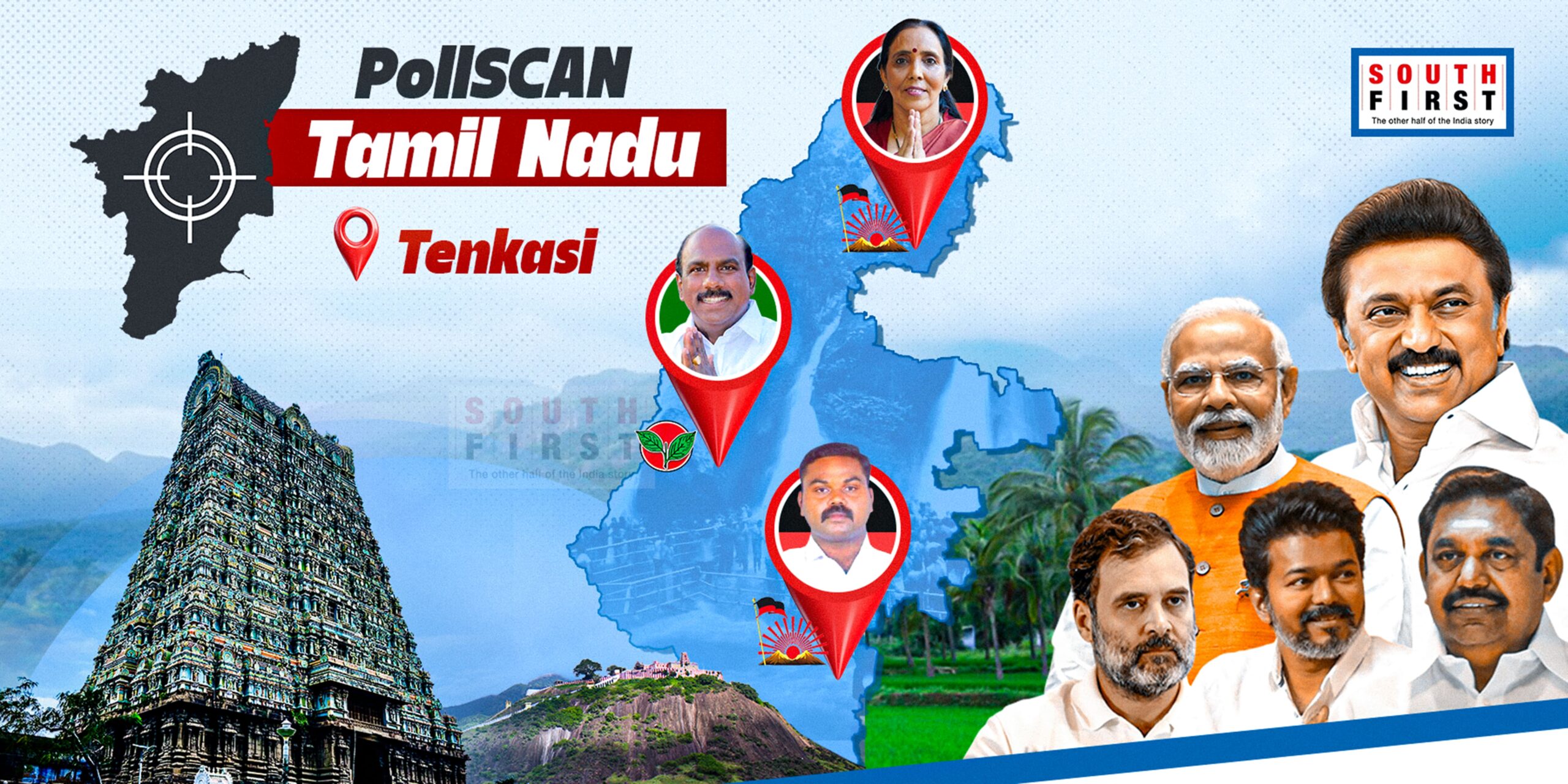Beyond social backgrounds, developmental issues could determine electoral outcomes — such as the long-pending SIPCOT project, road infrastructure demands, tourism development, resolving human-animal conflicts, and farmers’ issues. Whichever party addresses these effectively will gain an edge.
Published Aug 25, 2025 | 8:00 PM ⚊ Updated Aug 25, 2025 | 8:00 PM

Tenkasi district
Synopsis: The DMK-led alliance seems to have an edge over the AIADMK and its allies, but given the trend in two seats that alternate between parties, the outcome is hard to guess now.
Tenkasi district was carved out of Tirunelveli and formed as Tamil Nadu’s 33rd district in November 2019, during the previous AIADMK government.
With abundant water resources and fertile lands, Tenkasi is known for its natural beauty, particularly the towering Courtallam hills and waterfalls.
This district is also called the “Kashi of South India.” It is home to famous temples such as the Kasi Viswanathar Temple and the Courtallanathar Temple.
The district has five Assembly constituencies with a total of 13,64,080 voters — 6,67,616 men, 6,96,291 women, and 173 others.
For the Tenkasi parliamentary constituency, these five constituencies are counted together with the Rajapalayam constituency in Virudhunagar district. Rani Srikumar of the DMK now represents Tenkasi in the Lok Sabha.
Traditionally, the Tenkasi Assembly constituency has been a Congress stronghold. It has a total of 3,00,301 voters — 1,30,173 women, 1,23,838 men, and 12 others.
Being the central constituency of the district, it includes many tourist spots such as Courtallam and the Kasi Viswanathar Temple. The current MLA is S Palani Nadar of the Congress. Earlier, actor-turned-BJP politician Sarathkumar won this seat, giving it the reputation of being a star constituency.
In terms of demographics, the Nadar community forms over 40 percent of the population, the Scheduled Castes over 20 percent, with Mukulathors and Muslims also significant, along with others.
The Nadar community plays a decisive role here, and the present MLA Palani Nadar also belongs to that community.
AIADMK won in both 2011 and 2016, but in 2021, Congress reclaimed its influence. While AIADMK and DMK alliances remain competitive here, DMK gains additional strength from the support of Scheduled Castes and Muslims.
Sankarankoil is one of the two reserved constituencies in the district. The current MLA is Raja Easwaran of the DMK, who is also the party’s district secretary. The constituency has 2,54,013 voters — 1,30,126 women, 1,23,838 men, and 12 others.
The Maravar sub-group of the Mukulathor community makes up over 40 percent, Scheduled Castes over 30 perent, and other communities are also significant.
Victory here depends on who manages to secure these two major groups equally. From 1991 to 2016, AIADMK dominated this seat, but in 2021, the DMK won.
Given this history, AIADMK will make strong efforts to reclaim its lost ground, making the contest between the two parties intense. Traditional AIADMK voters will play a decisive role.
Vasudevanallur is the other reserved constituency in the district. It has 2,51,129 voters — 1,28,342 women, 1,22,780 men, and 7 others.
Currently, the MLA is Sathan Thirumalai Kumar T of the MDMK, an ally of the DMK. Historically, this constituency has favoured DMK and its allies more than AIADMK. AIADMK has won twice, while MDMK, Congress, Tamil Maanila Congress, and CPI(M) together have won multiple times, giving DMK’s allies the upper hand.
Demographically, Scheduled Castes form about half of the population, Mukulathors over 30 percent, Nadars over 15 percent, with others also significant.
Since DMK has fielded its allies continuously, it might decide to contest directly this time. But AIADMK also retains notable support here, meaning both parties will approach this election with new strategies.
Kadayanallur has 2,89,203 voters — 1,45,992 women, 1,43,196 men, and 15 others.
The current MLA is C Krishnamurali of the AIADMK. Traditionally, AIADMK and DMK’s allies have alternated victories here. In the previous term, IUML’s Mohamed Abubacker represented the seat.
Muslims form over 40% of the population, Scheduled Castes over 25 percent, Mukulathors over 20 percent, along with others.
A unique trend here is that for the last 25 years, Hindu candidates from AIADMK and minority candidates (Christians and Muslims) from DMK have won alternately.
Since the Muslim community largely decides outcomes, and given the AIADMK-BJP alliance, the tilt this time could favour DMK. Going by the historical trend, a DMK ally stands a greater chance.
Alangulam has 2,67,434 voters — 1,37,222 women, 1,30,192 men, and 20 others.
The current MLA is PH Manoj Pandian of the AIADMK, a prominent face. This constituency too alternates between AIADMK and DMK.
DMK’s well-known leader here is Poongothai Aladi Aruna, who served as minister during the 2006 DMK government. However, controversies such as corruption allegations, her 2020 suicide attempt, and a viral video during the 2021 elections which her mother asked people not to vote for her, have weakened her and the DMK’s standing in this constituency.
The Nadar community makes up over 30 percent, the Scheduled Castes and Mukulathors over 20 percent, along with others.
Due to DMK’s internal issues and the absence of a strong face, this constituency currently appears more favourable for AIADMK.
Beyond social backgrounds, developmental issues could determine electoral outcomes — such as the long-pending SIPCOT project, road infrastructure demands, tourism development, resolving human-animal conflicts, and farmers’ issues. Whichever party addresses these effectively will gain an edge.
Apart from Poongothai Aladi Aruna, there are no widely recognised faces in either party in this district. While DMK and its allies have traditional strongholds here, AIADMK too has long-standing loyal constituencies, ensuring tough competition.
The AIADMK-BJP alliance could influence the sizable Muslim population to shift their votes towards DMK. As of now, DMK appears to have higher chances of winning in a majority of the five constituencies.
(Edited by Majnu Babu).
